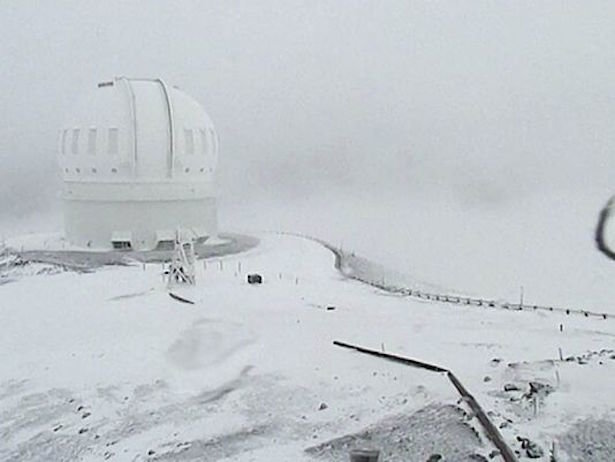
Mauna Kea park rangers reported "significant snowfall with continuous thunder and lightning over the summits," the National Weather Service in Honolulu tweeted late Sunday.
Upward motion of air (which meteorologists call convection) helps produce thunderstorms. But it's fairly rare to have convection within a winter storm. Thunder and lightning are much more common in warm-season thunderstorms, according to meteorologist Jeff Haby.
When there's strong enough convection, along with plenty of moisture available, a winter storm can produce thundersnow.
The winter storm warning for Hawaii was canceled Monday, the weather service said. No snow is in the forecast there for at least the next several days.
Though it was snowing at the tops of the volcanoes on the Big Island, temperatures remain typically mild throughout the rest of Hawaii this week, with high temperatures in the 80s in Honolulu.
The volcanic summits of Hawaii's Big Island have seen their fair share of snow this December, the Weather Channel said. Heavy snow fell on Mauna Kea and Mauna Loa over several days in the first week of December.
Snow on Hawaii's mountain peaks is not uncommon in the colder months because they are nearly 14,000 feet high. Mauna Kea has a sub-Arctic climate, the weather service said.
"As long as we have deep enough clouds to support ice crystals, and when you have cold enough temperatures at the summit level, you can get snowfall," said Matthew Foster, a staff meteorologist with the weather service in Honolulu.
Mauna Loa and its sister peak of Mauna Kea are both volcanoes. Mauna Kea is the highest point in the state.
"We'll probably see three to five snow events a year during the cold season. Some years we might not get any, some years we might get more," said Foster.
The only other area of Hawaii that gets snow with any regularity is the Haleakalā volcano on Maui, which at about 10,000 feet gets snow once every five years or so, he said.
The coldest temperature ever recorded in Hawaii was 12 degrees on Mauna Kea on May 17, 1979, the weather service said.



Reader Comments
to our Newsletter